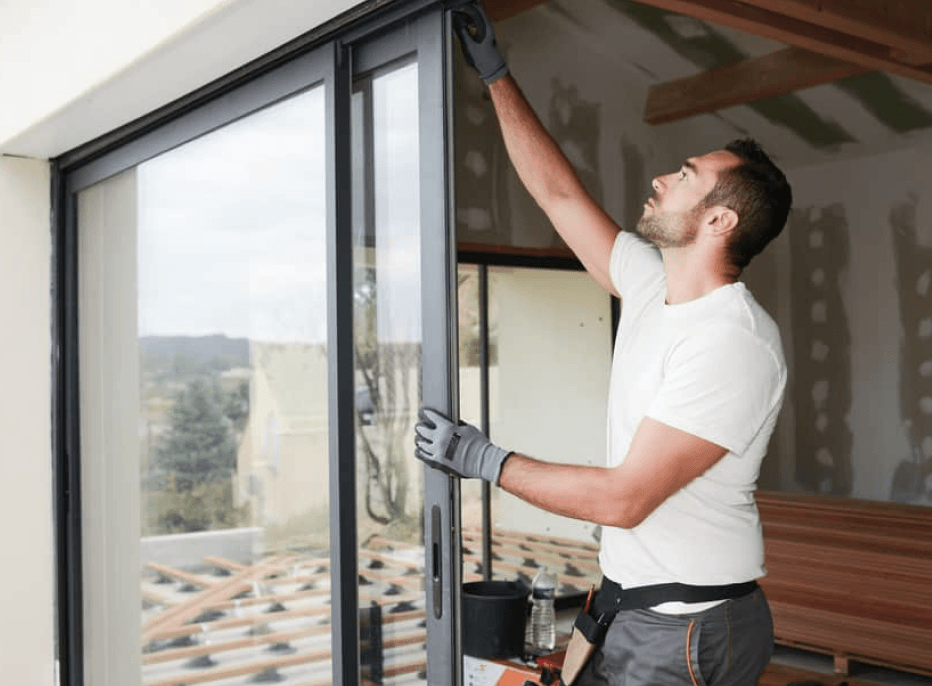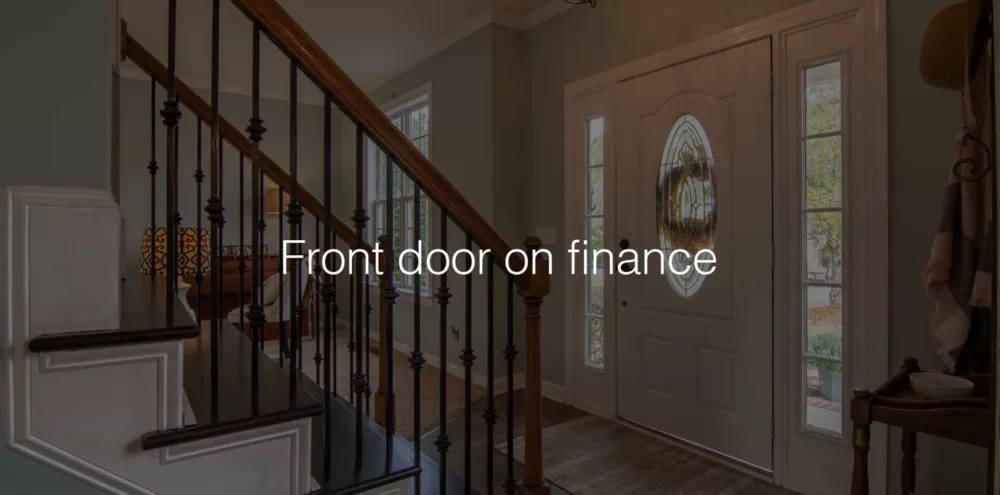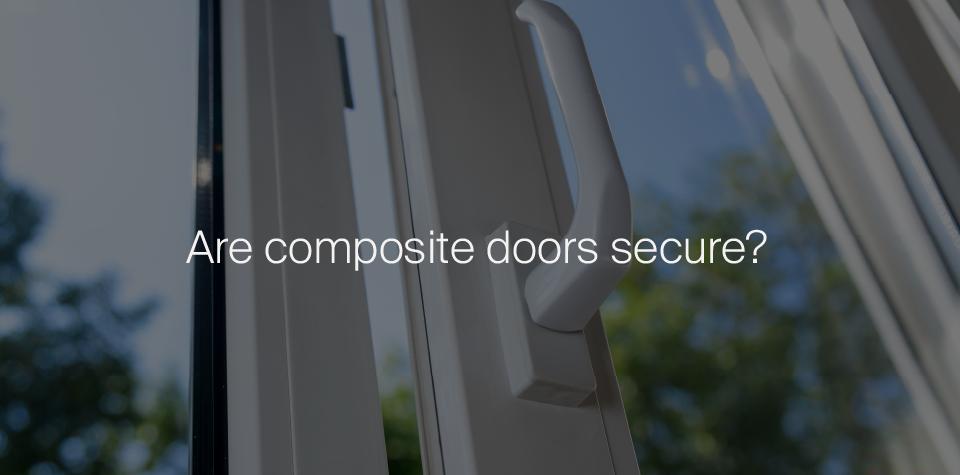Composite Door Letting In Water? Here is What To Do!
Have you ever installed a composite door only to find that it starts letting in water? It can be extremely frustrating, especially if you paid good money for the door.
This blog post will explore why composite doors let water in and how to prevent it, as well as some other benefits of composite doors so you can make an informed decision about whether or not they are suitable for your home.
Look at our composite front doors to get a taste of our available options. Design and order your new front or back composite door online now:
Why Is My Composite Door Leaking Water?
Water can leak through composite doors in a few different ways. The most common is through the composite door seal, located between the door and frame and is designed to keep water out. The door seal can become worn or damaged, allowing water to leak into the home, meaning you will likely need a composite door frame seal replacement.
Another way water gets through your exterior doors is via gaps in the door. Composite doors with joints comprise several materials held in place and fused, but these joints can loosen over time, creating gaps and allowing water to seep in. Gaps can also be created if your composite door has warped, meaning it doesn't fit the frame as well as it should, allowing water to fit through the small gaps.
If you have composite French doors, you will have potential side panels that may also need looking at. This is the same as composite double doors, which are similar to French doors.
If your composite exterior door leaks when it rains, it must be repaired as soon as possible. Water damage can cause serious problems, so it's best to nip it in the bud before it gets worse. Look at our website if you need more tips on maintaining and choosing composite doors.
Poor drainage in a door track can be improved
Most exterior doors have a built-in drainage system with drainage slots.
Poor drainage in the door's track is one of the main issues that can cause a composite door to let in water.
This can be fixed by ensuring that the door's track is clean and free of any debris that could block the holes. You can unblock it with a thin screwdriver.
You can add silicone lubricant to the door's track to help prevent water runoff.
Composite door hinge (dropped hinges)
It's perfectly normal for hinges to drop, and your door might need a minor hinge adjustment. Self-lubricating bearings will keep your door in good condition and working properly for a long time.
Can glass be changed in a composite door?
While a composite door is made to be durable and withstand the elements, over time, glass can become warped or cracked, allowing water to seep in and cause damage. However, you can attempt to repair a crack in a composite door, if possible, to fix the leak and stop water coming through.
If your composite door is letting in water, it must be fixed promptly to avoid further damage. If there are issues with your glass, you can replace the glass panel, but if the door's side panel frame is damaged, you may need to replace the entire door.
Worn weather composite doors seal or gaskets are easily replaced
If your composite door is letting in water, it may be because the weather seals or gaskets are worn. Luckily this is easy to fix, and you can do it in just a few minutes.
First, remove the old weather seal or gasket from the door - you may need to use a putty knife or other tool to pry it off. Once it's off, clean the door's surface where the seal was located.
Next, measure the space for the new seal or gasket. Cut it to size if necessary, then hold the new seal or gasket in place and make sure it's snug and secure.
You may need to use some caulking or other material to create a watertight seal around the new weather stripping. Once everything is in place, test your door to ensure it's not letting in more water.
If you've got pets and want to customise your door without causing cracks, check out our tips on fitting a cat flap to a composite door.
Do Composite Doors Have Drainage Holes?
Yes, composite doors have drainage holes. These are usually located at the bottom of the door, allowing water to drain out so that it doesn't pool inside. This helps to keep the door from getting damaged by water over time. If it didn't have these drainage holes, then a composite door leaking at the bottom would be a more common occurrence.
How Do I Fix A Leaking Composite Door?
If your composite door is leaking water, there are a few things you can do to fix it. First, check the door seal to see if it is damaged or needs to be replaced.
If the seal is in good condition, you may need to adjust the strike plate or latch to ensure a tight fit. You can also apply silicone caulk around the door frame to help seal any gaps.
Check out our tips on maintaining and choosing composite doors to get a better idea of how to keep your new door as good as new.
Benefits Of Composite Doors
- Highly secure (more secure than a timber door or uPVC door)
- Low maintenance/simple maintenance
- Energy efficient
- Attractive and modern styles and designs are available
- Your home will stand out compared to houses with uPVC or timber doors
FAQs
Are composite doors watertight?
Composite doors are made from a mixture of wood, plastic and Glass Reinforced Polyester.
They are designed to be water-resistant and have a variety of features that make them ideal for any home.
However, if they are not installed correctly or if they are not properly maintained, they can allow water to enter the home.
Why is my front door leaking water at bottom?
Water can enter through gaps in the door, around the edges, or through the door itself.
If the door is not sealed properly, water can seep through the wood and other exposed materials and into the home.
Close your door properly to prevent damage to your door panel and stop your front door leaking water at the bottom.
Dropped hinges, issues with drainage slots, holes in the door or other joint problems can cause leaks.
Fixing these issues could mean installing self-lubricating bearings, making a minor hinge adjustment or just closing your door properly every time you go in or out to stop water coming in under the door.
Most exterior doors eventually develop leaks, but you needn't replace the entire door in most cases.
What are common composite door problems alongside water coming in under door?
One of the standard composite door problems is that they can let excess water in through the built-in drainage system.
This is often due to poor installation, blocked drainage, or worn weather seals. Another common problem is sticky locks.
Exterior Door Leaks When It Rains - Final Thoughts
It's essential to ensure your door is properly sealed and maintained to prevent drainage issues and potential water damage.
If your door is letting in water, take action immediately to avoid more damage down the line.
If you want a new composite door, look at our composite door range or get in touch to find out more details.
Design and order your door fully online below with a range of finance options at checkout:



